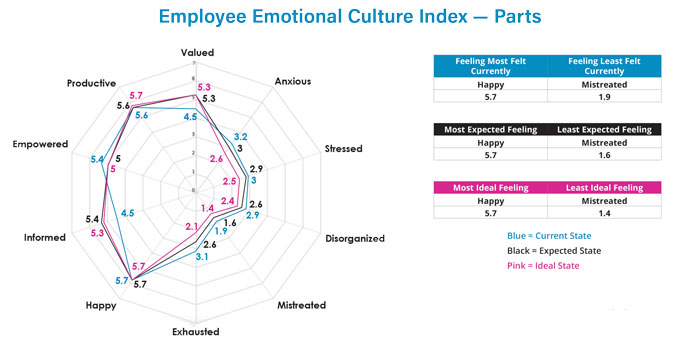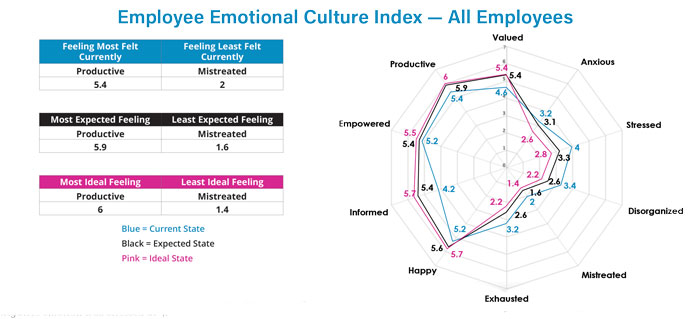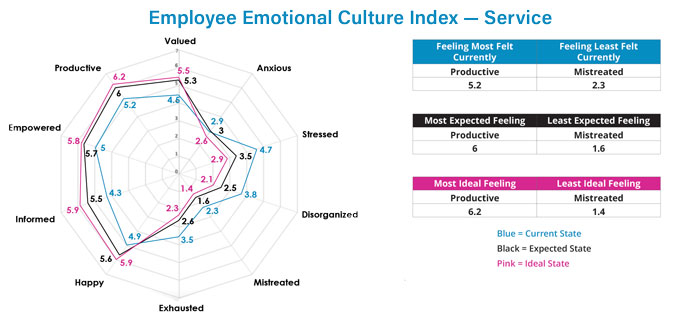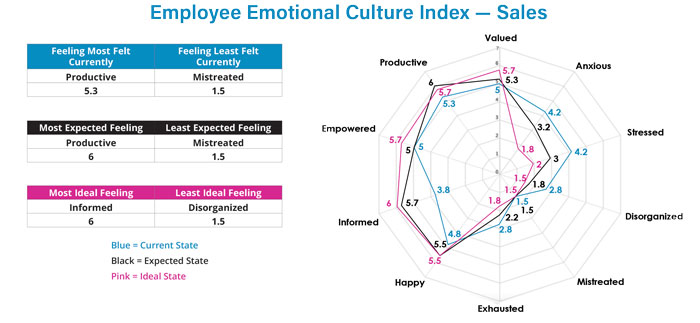The current dynamic environment of the ag equipment industry can directly impact your employees’ happiness, productivity and how they feel they are being treated by management. According to Bill Hoeg, founding member of the Machinery Advisors Consortium (MAC), the stress of the problems the ag equipment industry has faced over the last 3 years has shifted overall employee attitudes into a more negative area. As a result, there’s a greater need for dealership management to understand the emotional status of their employees. “If you have a good leadership team who works in a healthy emotional culture, it will affect the way employees turn around and deal with customers,” he says.
Dealer Takeaways
- Parts employees are the least stressed among the departments but are still indicating their workplace emotions can be improved.
- The parts department in particular wants to be better informed and feel more valued by the dealership.
- Craft your processes to incentivize department cooperation, which promotes a customer-centric environment.
What is Emotional Intelligence?
One key to improving your employees’ emotional state is having the tools to understand how emotion impacts the dealership, something Hoeg calls “emotional intelligence.”
“The concept is understanding how a person thinks, what they’re feeling and how they react because of that,” Hoeg says. “If you can do that and work to grow a comfort level and a confidence level in that area, employees perform better. They enjoy what they do more, and that’s reflected around them.
“You get a bad apple or somebody who’s really negative, and everybody around them becomes negative. The idea is to understand that and keep people on the more positive side. If you can, it radiates out to relationships with growers and/or clients, which allows the dealership to perform better and create a better customer experience.”

The largest gap between current and expected feelings for parts employees was informed, with a current reading of 4.5 though they expected to be at 5.4. Source: Machinery Advisors Consortium
Hoeg brought up one side note. “If you are adding or taking over a new location, it is very important to consider the emotional intelligence culture of that location. Marrying 2 cultures together is always a challenge, and this process gives the new ownership a much stronger engagement road map.“
Dealer Employee Emotional Culture Survey
One way MAC examines the emotional health of a dealership’s employees is through a survey that puts staff on the Emotional Culture Index. Hoeg says the index measures how often employees feel certain emotions, how often they think it’s reasonable to experience those feelings and how often they would ideally experience these feelings to be effective.
Hoeg breaks down a survey MAC did with one dealer location in Nebraska in December 2021, where responses were broken down by service, parts and wholegoods staff. The index measures 10 emotions on a scale of 0 to 7.
Broken out by parts, service and wholegoods, parts employees scored the lowest out of the 3 departments in their current levels of stress at 3 out of 7. Parts employees scored the highest in their current levels of productive (5.6), empowered (5.4), informed (4.5) and happy (5.7). In one category, parts employees’ current feeling of being empowered (5.4) actually surpassed their expected and ideal feeling of 5.

For all the dealership’s employees, the strongest positive emotion currently felt was productive at 5.4, while the strongest negative emotion was stressed at 4. Source: Machinery Advisors Consortium
“Although they were running into parts shortages, parts hoarding and vendors being unable to get parts off trucks, parts employees didn’t have the issues other departments had. Of course any shortage in parts for specific machines enhances the service department’s stress. But for the parts people in general, things were pretty much similar to what they were used to prior to this upturn in wholegoods sales,” says Hoeg.
Comparing parts employees’ current feelings to their most expected feelings, however, shows there’s still room for improvement. One notable area of improvement was in the valued reading, where parts employees currently ranked at a 4.5 but expected to rank at a 5.3. Parts staff came in at 3.1 on the exhausted scale, which surpassed their expected feeling of 2.6. The largest gap between current and expected feelings was for feeling informed, where parts employees’ current reading ranked at 4.5 though they expected to rank at 5.4.
Creating a Customer-Centric Environment
Once dealership management understands the emotional status of their employees, they can begin to address those emotions to better the processes that allow the departments to work together. Hoeg using the analogy of “wrapping” your processes around your employees’ emotional status. Doing this helps move the employees’ attitude toward their work from “department vs. department” to working as a team for the customer.
“I’ll start with a joke — parts and service people don’t always get along, but there’s one common denominator that will always unite them: they both can’t stand the sales department,” says Hoeg. “When you put in the proper processes so that everybody can succeed, employees work together and the customer wins. The emotional side of it is a critical key. But what you find is that some of the financials and processes of the past actually pitted the different departments against each other.

Service employees ranked the highest in the stressed, disorganized and exhausted categories. Source: Machinery Advisors Consortium
“To be successful, I would have to do certain things in parts, for example, that would harm the service department. Look at where everybody is coming from in their emotional intelligence standpoint, and then start wrapping your processes around that. This helps employees to step back and say, ‘It’s not about me, it’s about us and it’s about the customer.’ That’s the realization you need to work toward: if it’s about me, everybody’s going to be at odds with each other.”
Hoeg says the biggest takeaway for dealers is to step back and really observe their employees, as the last 3 years may have kept them from seeing things clearly.
“You’ve probably taken things for granted, especially through the last 3 years of COVID and other industry issues,” he says. “There have been a lot of battles going on, like trying to retain techs and find people to work who know how to interact with customers.
“There are ways to assess your team and do it in a non-threatening way that give you the information you need to start moving your organization and culture back into a more positive area.”
Lighting the Fire
The end result of understanding where your employees’ emotions are at, says Hoeg, is using it to better engage with and motivate them. He refers to this as “lighting the fire.”
“There’s different ways of managing and different ways of coaching, and you can fill people’s buckets up with information,” says Hoeg. “But the key is not just to fill it up, but to find a way to get them engaged. That’s lighting the fire: motivating and engaging them to go out and want to give the best customer service or provide the best product knowledge and be there for the customer.”

For current emotions, sales employees ranked the lowest in the informed and happy categories but the highest in the valued category. Source: Machinery Advisors Consortium
For parts, Hoeg says that fire is lit when they first meet their customers’ needs at the parts counter or learn to anticipate their technicians’ needs and how to “feed” them their parts.
“This goes back to emotional intelligence. If you have employees who are happy, enjoy their job, want to go to work and feel competent in what they do, and you’ve matched up their skillsets with what they need to do with the customers, that lights their fire.”






